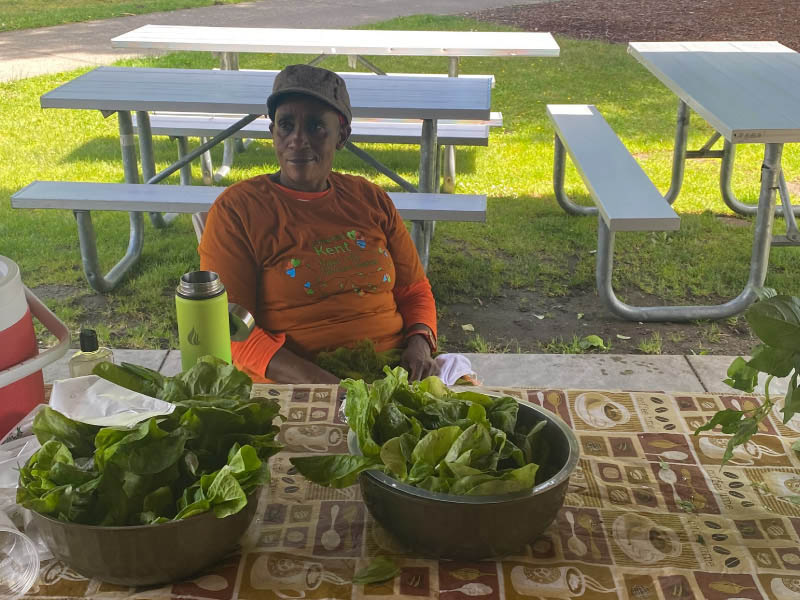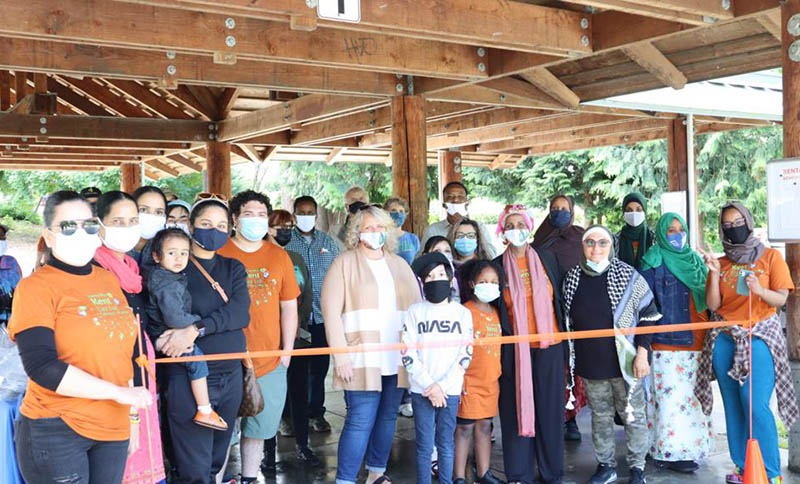Farming takes root in Seattle-area food desert
By Michelle Hiskey, American Heart Association News

Nine thousand miles separate Veronica Karanja from her mother's farm in Kenya and where she now farms in Kent, Washington.
Karanja's expertise – and her vegetables that are culturally significant in Kenya – are helping transform a food desert just south of Seattle by supplying freshly picked produce at the seasonal East Hill Farmers Market.
"This makes me feel so good," she said a few days before the market opened in mid-June. "I'm doing the work I am supposed to do."
Being able to eat a healthy diet depends largely on having access to affordable, nutritious food – and that often depends on proximity to grocery stores and enough available income to buy food. But some communities don't have such access because of a historical lack of investment and other systemic problems.
Karanja farms within one of those communities, which are known as food deserts.
"Our mission is to have a healthier community," said Xavier Wurttele-Brissolesi of Living Well Kent, an immigrant-led nonprofit working to create a healthier, more equitable food system in the community of 132,000, among which 13% live in poverty and 1 in 3 were born outside the U.S., according to 2019 census data.
"The grocery store may be 2 miles away," Wurttele-Brissolesi said, describing what shopping can be like in a food desert. "But to get there, they might have to walk to take the bus, and if they have four to six kids, how are they supposed to bring home enough food on the bus? It's easier to get a frozen pizza from the corner store."
Living Well Kent sells the farmers' produce through a community-supported agriculture program, giving customers access to a range of products based on a subscription or membership fee; and it sets up the weekly market, where shoppers can pay for the vegetables with federal nutritional subsidy benefits like SNAP, the Supplemental Nutrition Assistance Program.
"In Seattle, the urban agriculture scene can seem like a privileged space when you rely on SNAP benefits," said Wurttele-Brissolesi, who manages the food access program that supports the immigrant farmers' work. "You can feel like you don't belong, and our goal is to help the people who need the most help."
King County, where Kent is located, is home to Tokul soil, which is one of the world's most productive soils thanks to fallen ash from the state's volcanoes. On five acres leased by Living Well Kent, Karanja and nine other immigrant farmers grow crops that include greens, tomatoes, carrots, onions, turnips, radishes and peppers. They also have access to a greenhouse and technical assistance. Tools, seeds and water are free for them.
The city of Kent is one of the most ethnically diverse communities in the country. The farmers themselves represent countries that include Somalia, Zimbabwe and Iraq, so their farming practices are rooted in the Middle East and Africa The group also includes farmers from Mexico and Afghanistan. Living Well Kent encourages them to grow vegetables that are significant in the country where they got their start.

Managu – a leafy green grown in Kenya – is growing on Karanja's plot. She uses it as a divider between other vegetables, a method she learned in Kenya to maximize her yield.
Another is planting corn on the perimeter of her plot and using the cornstalks to support vines of sweet snap peas.
"When the wind comes, nothing falls," she said.
Sales of her all-organic produce make up 80% of her annual income, Karanja said. Along with managu, she grows terere, a leafy vegetable, and kahurura, a pumpkin-like gourd.
Even more important, her fresh-picked harvest feeds her, her husband and three children. As her mother taught her to farm in Kenya, she is teaching her children to farm in Kent.
"I know you are what you eat," she said. "You eat healthy food, you will be healthy. Even your heart can't be healthy if you are not eating healthy food. This is food grown without chemicals, with only organic fertilizer, and for those who cannot afford to buy it, I donate it through the churches."
In 2020, because of the pandemic, Living Well Kent operated only a farm stand, not a market. They harvested 4,000 pounds of produce.
This year, the organization's goal is 10,000 pounds. To reach it, Living Well Kent needed funds to lease farmland, pay for water and seeds, and continue operating the greenhouse. "Farmers from hotter climates find the greenhouse very valuable," Wurttele-Brissolesi said.
About 65% of those costs are covered in 2021 through funding from the American Heart Association's Bernard J. Tyson Impact Fund, named for the Kaiser Permanente CEO who died in 2019. The fund invests in local, evidence-based efforts to reduce health disparities and address social determinants of health.
For farmers like Karanja, the growing season does not end the nutritious food supply. In winter, she will make meals from the extra produce that she prepped and stored in her freezer – extending her farming's impact in the food desert of Kent.
If you have questions or comments about this story, please email [email protected].




